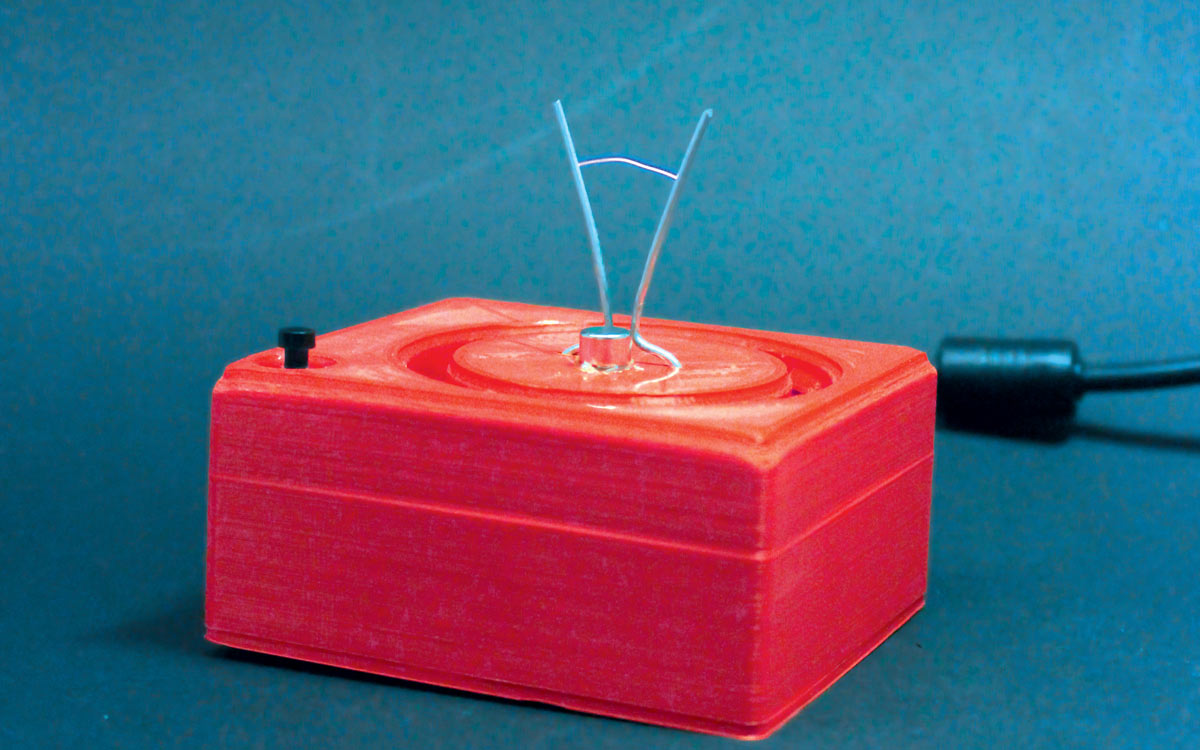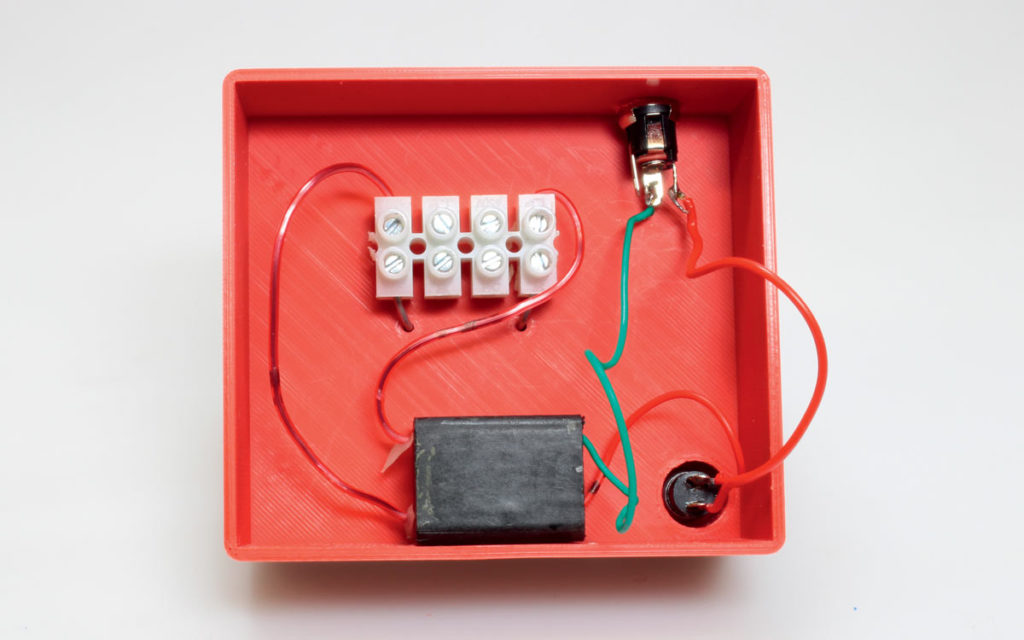
Translated from the original German by Niq Oltman
In times past, Jacob’s ladders were often featured in horror flicks for their decorative effect. As the bright purple spark climbs between the electrodes, growing longer as it rises, it crackles with a sound that says “mad scientist”! As a spark gap, the Jacob’s ladder also makes a very good high voltage surge arrester, and they’re still used for this purpose today, such as on overhead wires for trains.
If you’re looking for a home-friendly version, you’ll find one on Thingiverse. Created by Matthias Balwierz, aka bitluni, it’s all packaged inside a 3D printed enclosure; you can see it in action in Matthias’ video. More details on this electrifying project follow below. But first, let’s have a look at how the ladder works.
DANGER: HIGH VOLTAGE! This little ladder generates very high voltage, up to 20kV. It is unsafe for children or users of pacemakers or similar implants.
Ladder Logic

The functional principle is pretty simple (Figure A). A voltage is applied to the ladder electrodes from a transformer — say, from a neon sign, microwave oven, or model train, or, in our case, the output from our little high voltage generator. If that voltage is high enough, an arc forms where the gap between the electrodes is shortest. (For an arc to “make the jump” across the gap, you need about 1,000 volts per millimeter.) This arc is simply air that has been ionized by the voltage, making it electrically conductive. The electrical energy flowing across the arc is partly converted to light, heat, and magnetic fields. This causes the voltage across the electrodes to drop significantly, as the resistance of the arc provides a load on the high voltage source.
The arc’s heat — and, to some extent, its magnetic field as well — cause it to travel upward. At this point, the voltage is too low to ignite another arc. As the existing arc travels up, the widening gap between the terminals forces it to stretch. Recall that wider spark gaps require higher voltages for arcing: the arc keeps traveling until the voltage can no longer sustain it, at which point it breaks down. With the arc gone, there’s no load on the voltage source anymore, and the voltage will again begin to rise. Once it’s high enough for a new arc to form, the cycle repeats.
Enough theory; let’s move on to practice. For starters, a word of warning: the Jacob’s ladder requires high voltage. The voltage boosting module we use can supply up to 20 kilovolts! Use great caution when working on this project — avoid any contact with the voltage. Don’t build this project if you wear implants such as pacemakers, insulin pumps, or similar. This build is not safe for children, either.
The parts are cheap. Including the power supply (power brick or LiFePo batteries), you’ll need maybe $20 worth of materials. The build can be completed in about an hour. If you’re going to 3D print your own case, this will take longer (around 6 hours), but it’s not necessary. In principle, you can use any enclosure made from non-conducting materials. You may need to get creative figuring out how to attach the terminals and the glass hood.













